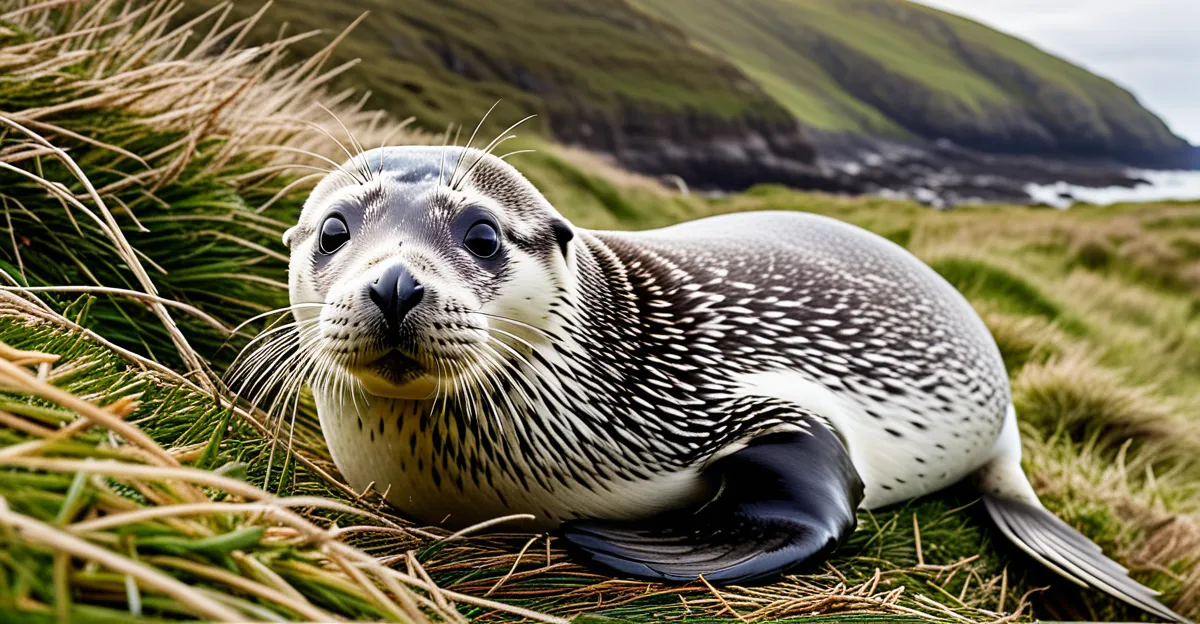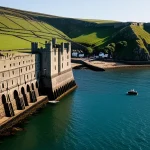Introduction to Coastal Trails in the UK
Exploring coastal trails in the UK offers a unique opportunity to connect with nature and witness incredible wildlife encounters. These trails not only provide breathtaking views but also serve as a haven for diverse species, including seabirds and seals. These trails are vital for the conservation of natural habitats, allowing these animals to thrive in their natural environment. Wandering along these paths, visitors can experience a sense of wonder and develop a deeper appreciation for the delicate ecosystems sustained there.
The UK boasts a wide range of coastal trails, each offering distinct experiences, from rugged cliff paths to serene sandy beaches. These routes are perfect for those keen on observing wildlife amid stunning landscapes. The variety in terrain and scenery means there is a trail suitable for everyone, catering to different interests and skill levels. Alongside the wildlife, these trails provide encounters with the UK’s rich geological and historical landscapes, creating a holistic experience for any nature enthusiast.
Additional reading : Embark on an enchanting journey: the ultimate guide to exploring the uk’s historic fortresses and military legacy through guided tours
By understanding the significance of these coastal trails, we also embrace our responsibility to preserve them, ensuring that future generations can enjoy the same rich encounters with nature. This protection is especially important for maintaining the natural habitats of seals and seabirds, which rely on these areas for breeding and shelter. Preparing to embark on these trails also involves adopting sustainable practices, such as sticking to designated pathways and minimizing disturbances to wildlife, to help protect these delicate environments. This commitment to sustainable exploration enriches the experience, allowing us to enjoy and conserve the beauty of the UK’s coastline.
Trail Accessibility and Difficulty Levels
Exploring coastal trails in the UK can be a rewarding adventure for everyone, thanks to their varying trail difficulty levels and accessibility. Understanding these aspects ensures a pleasant experience, regardless of age or physical ability.
This might interest you : Unlock the joy of morris dancing: the essential beginner’s guide to traditional workshops
Trail Difficulty Ratings
The diversity of coastal walks means there’s something for everyone, from leisurely strolls to challenging hikes. Trails are generally rated in terms of difficulty, ranging from easy to difficult, allowing explorers to choose paths that match their skill level. Easy trails typically feature direct and well-maintained paths suitable for families and beginners. In contrast, more advanced routes may include steep inclines, rugged terrain, or longer distances, suited for experienced hikers seeking a challenge.
Accessibility for All
Many coastal paths are accessible to individuals with disabilities and families with young children, thanks to thoughtfully designed routes that accommodate wheelchairs and strollers. Some popular UK coasts offer amenities such as clear signage, information boards, and facilities along the way to enhance accessibility. Before heading out, it’s wise to research the specific amenities available on the trail of interest to prepare accordingly.
Essential Gear and Preparations
To make the most of hiking in the UK, being adequately prepared is crucial. Essentials such as sturdy footwear, weather-appropriate clothing, water, and navigation tools are vital for any outing. For longer or more challenging routes, consider packing snacks, a first aid kit, and a map or GPS device. Being prepared enhances safety and ensures an enjoyable experience, allowing you to appreciate the stunning landscapes and wildlife encounters that await.
Best Coastal Trails for Seal Viewing
Exploring the UK’s rich array of coastal walks offers a fantastic opportunity for memorable seal watching experiences. Certain trails are well-known for their thriving seal populations, giving wildlife enthusiasts a unique chance to observe these fascinating creatures in their natural habitats.
Specific Trails for Seal Watching
The scenic shores of Blakeney Point in Norfolk provide one of the most renowned seal-watching sites. Here, visitors can witness both common and grey seals lounging on the sands, especially during the pupping season in winter.
Further up north, the Farne Islands, accessible via boat trips from Seahouses, are a haven for seals, particularly during the summer months, when the waters teem with frolicking pups. It’s a great spot for observing seals both on the shore and in the water.
Access Points and Recommended Routes
For optimal seal sightings, plan a walk at Horsey Gap, where well-marked routes guide you along the beach, perfect for spotting seals from a respectful distance. Similarly, Donna Nook in Lincolnshire offers public viewing areas where seals are easily visible without disturbing their habitat.
Seasonal Considerations
Timing your visit is crucial; winter months tend to be prime for seal watching as this coincides with the seal pupping season. However, summer offers the chance to see seals engaging in lively water play. Always remember to check local guides for up-to-date information on seal activity and any access restrictions to ensure both safety and environmental preservation during your visit.
Photographic Opportunities on Coastal Trails
Exploring the stunning coastal trails of the UK offers an array of photography spots perfect for capturing memorable wildlife moments. From the striking outlines of seabirds against the sky to playful seal pups on sandy shores, these trails are a photographer’s paradise.
Best Locations for Wildlife Photography
For capturing seals, the sandy expanses of Blakeney Point in Norfolk and the rugged beauty of the Farne Islands are unparalleled. Here, seal watching meets the art of photography, with ample chances to photograph seals in their natural habitat. Meanwhile, seabird enthusiasts will find the cliffs of Bempton in Yorkshire and Skomer Island in Wales teeming with vibrant avian life, offering unparalleled opportunities for seabird watching and photography.
Tips and Equipment Recommendations
Effective wildlife photography demands patience and the right gear. A good zoom lens is essential for capturing seabirds in flight or seals at a distance without disturbing them. Early mornings and late afternoons, with their softer light, often yield the best results.
Photographic Events and Workshops
Many regions along the UK coast host photography workshops tailored to capturing the diverse wildlife. These workshops not only provide expert guidance but also enrich your experience, helping you master the techniques needed for stunning wildlife shots. Participating in these events can also connect you with fellow enthusiasts, creating a community of shared passion for wildlife and photography.
Local Amenities and Wildlife-Friendly Practices
When embarking on the coastal trails of the UK, you’ll find a variety of local amenities to enhance your experience while promoting eco-friendly activities. Whether you’re in need of a refreshment or seeking guidance on responsible tourism practices, the UK trails have something to offer every nature enthusiast.
Available Amenities
Most popular coastal trails are equipped with necessary facilities such as parking lots, restrooms, and cafes. These amenities ensure that your visit is comfortable and enjoyable. It’s always a good idea to check the availability of these services ahead of your visit, as less frequented paths might lack such conveniences.
Eco-Friendly Tips
Engaging in responsible tourism involves making minimal impact on the environment. Stick to established paths to protect the habitat and use biodegradable products when possible. Avoid disturbing the wildlife, and carry a reusable water bottle to reduce litter. Small actions like these contribute significantly to maintaining the natural beauty of the area.
Local Guides and Organizations
Many local guides and organizations are dedicated to promoting eco-tourism. These groups offer tours and advice on how to enjoy the trails responsibly. Participating in guided tours can enrich your knowledge of the area’s wildlife and ensure your visit supports sustainable practices. By choosing to patronize such services, visitors play a role in the ongoing preservation efforts for these treasured natural landscapes.
Safety Tips for Coastal Trail Explorers
Exploring the UK’s astonishing coastal trails requires a keen focus on safety to ensure a delightful and secure adventure. Whether you’re an amateur enthusiast or a seasoned explorer, understanding safety tips is essential for a rewarding experience.
Key Safety Considerations
When venturing along coastal paths, maintaining awareness of changing weather conditions is crucial. Coastal weather can be unpredictable, so it’s wise to check forecasts before your hike and dress accordingly. Always have layers of clothing for protection against sudden chills or rainfall.
Guidelines for Wildlife Interaction
During a trail, you’re likely to encounter diverse wildlife, including seals and seabirds. For safe and ethical wildlife interaction, observe animals from a respectful distance. This ensures their habitats aren’t disturbed, and minimizes potential stress on the creatures.
Emergency Procedures
In case of an emergency or unexpected wildlife encounters, having a basic first aid kit is advisable. Always inform someone of your planned route and expected return time. Knowing the location of the nearest emergency services can also be life-saving. For unplanned situations, such as sudden changes in tide or injury, carrying a reliable communication device is vital for alerting help swiftly.
Notable Coastal Trails for Seabird Spotting
Exploring the UK coasts offers spectacular opportunities for seabird watching, with various trails showcasing diverse bird species in their natural habitats. These paths provide an ideal way to observe seabirds like puffins, guillemots, and gannets, especially during their nesting seasons.
Popular Bird Watching Trails
Notably, Bempton Cliffs in Yorkshire is a well-known site for bird watching. The sheer cliffs harbour thousands of seabirds, making it a must-visit for enthusiasts. Another exceptional location is Skomer Island in Wales, home to significant puffin colonies offering incredible views during spring and early summer.
Unique Seabird Habitats
These trails often pass through unique habitats such as cliff edges and grassy islands, where various seabird species nest and raise their young. Skomer Island, for example, features flower-adorned cliffs perfect for puffin breeding, providing an enriching birding experience.
Recommended Bird Watching Practices
Successful seabird watching requires patience and respect for the natural environment. Observers should maintain a safe distance from nests to avoid causing stress to the birds. Early morning visits often yield the best sightings as birds are most active at this time, creating unforgettable moments for birdwatchers.









